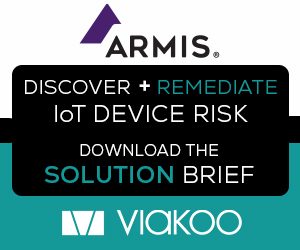Access control is one of the most prevalent physical security technologies deployed, and not surprisingly it is getting a lot more complicated. Many organizations operate within a facility or controlled area, with an access control system used to protect the perimeter and enable appropriate access inside the facility. In recent years the combination of environmental design (e.g. “man traps” designed into entrances), need for fast response time when breaches occur, and the need to communicate with first responders with accurate information have placed new data reporting burdens on operators of access control systems.
Failures at any point in the access control process can be damaging. A controlled perimeter is a particularly important concept, because once an intruder, criminal, or anyone with a negative intent crosses that perimeter, the risk of an incident of some kind increases dramatically. And if other points inside the perimeter are easily accessed by unauthorized people (an inventory holding area, for example), that already high risk increases even more dramatically.
By providing perimeter security, access control provides a wide range of benefits to the organization, starting with security, of course, but also extending to additional areas. For example, access control provides safety benefits for staff and visitors when hazardous machinery or chemicals are on site. Access control can also protect against theft of or tampering with materials, eliminate work disruptions from unauthorized visitors, and reduce liability risks should unauthorized intruders become injured. And, there are many regulated industries ranging from energy facilities to food processing plants and credit card processing centers where access control is required to be in compliance.
In addition to the ability for unauthorized entry, failures in access control can have more subtle impacts. For example, knowing when and where breaches occurred can significantly help to prevent future breaches. Having an accurate count of people in a building can guide rescue efforts in case of fire or earthquake. A cornerstone of most compliance requirements is showing that you are in control of a system; failures therefore must be tracked, analyzed, and understood to truly show that the system is under control.
With all these benefits, it is no wonder that organizations choose to invest in and implement access control systems, and that the importance of these systems is quite high. In fact, in any of these cases, if the access control system were to fail without raising the attention of management, the organization could be subjected to increased risk on a range of factors. Consider a highly regulated industry such as food processing – if an inspector was to discover that an access control system had been out of service, and management couldn’t provide an auditable report of uptime, that could have an enormous negative impact on the business including operational downtime, possibly the need for additional food safety testing, and even financial costs such as fines or the disposal of food in process that could not be guaranteed to be safe. With such significant impacts at stake, the ROI of a service assurance solution is clear (in fact, most Viakoo customers find they achieve payback within a few months).
Service assurance systems are available that can monitor access control system metrics on a continuous basis to provide immediate notification on the detection of access panel failures and an entire range of system configuration details. With this information, security and facility management have the real data they need for a complete understanding of the access control system status, operational details, and reporting for proof of compliance and uptime. These detailed measurements of operational performance factors such as uptime are almost impossible to achieve on a manual basis but can be efficiently achieved using automated service assurance systems.
Having such a system in place at the food processing plant mentioned above would mean that the system fault would have been noticed immediately, and items to check for corrective action would have been provided by the automated service assurance system. Management would have clear, accurate uptime records to show the inspectors, inspiring confidence that the situation was handled appropriately.
In other blog posts, we have discussed the idea that physical security systems without service assurance can be dangerous. At best, such system may give users a false sense of security; at worst, lives could be at risk. Automated service assurance and automated verification of physical security system performance can minimize downtime dramatically, while also enabling detection of cyber threats and simplifying compliance reporting.
In any complex business enterprise, there are many factors that are difficult to know or control with certainty. But organizations can take action to control as many factors as possible, and new automated service assurance systems are providing new, powerful tools that greatly expand management’s capabilities to act proactively and capture valuable benefits. For more information about how service assurance can help you maintain your access control system, contact Viakoo – getting started is easy.







